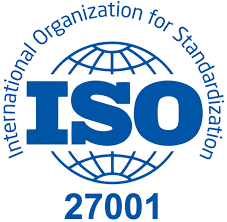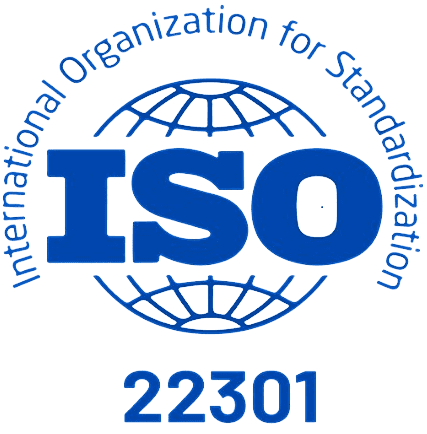
Managing your own risk is tough enough, and now your organization has to worry about how every supplier and vendor deals with risk. Yep, your business is on the hook for the risky moves or inactions of everyone in your service and supply-chain network. Sounds pretty overwhelming, doesn’t it? Your organization needs to be really concerned about third-party risk today.
Picture this: you’re working with a credit card processing vendor you’ve trusted for years with your customers’ sensitive info. They seemed serious about data protection and used top-notch tools to keep customers’ point-of-sale info safe.
But then, to cut costs, they didn’t renew crucial security software. That choice created lots of weak points, and hackers quickly took advantage, swiping your customers’ credit card details. Ouch. Now, your business shares the financial, legal, and reputation hit from this vendor’s security blunder.
Third-party risk should be a big worry for all businesses today, whether you’re a giant corporation or a tiny startup. If your business deals with supply-chain partners or outsources anything, third-party risk should be on your radar.
Charles Denyer, a respected expert in National Security and Cybersecurity, points out how crucial third-party risk is today: “In my opinion, it’s the biggest risk facing organizations right now. Most businesses just don’t have the capacity to thoroughly check out third parties, and it only takes one bad apple in the supply chain to create huge risks.” This article will dig into the hazards of third-party risk and give a list of important risk-related questions for businesses to use when checking out all vendors and members of their supply-chain network.
Third-Party Risk
The risk associated with third parties is the chance that your organization might face a negative occurrence (like a data breach, operational disruption, or harm to its reputation) when you decide to delegate specific services or utilize software developed by external parties for particular tasks. These external parties can be any distinct business or individual offering software, physical goods, or services. They encompass software vendors, suppliers, staffing agencies, consultants, and contractors.
Counting on third parties for the smooth running of your business inherently carries risk. Ultimately, you have to rely on a separate entity whose business practices and processes are beyond your control.
Decoding Challenges: The Risks in Collaborating with Third-Party Vendors
Third-party risk typically exists in one of the six following areas:
- Financial: Financial risk emerges when a third-party action harms the financial health of an organization. This could be due to subpar vendor work, a faulty component slowing down business, or financial setbacks like fines and legal fees.
- Strategic: Strategic risk crops up when there’s a misalignment between third-party and organizational business strategies. This risk often stems from less-than-optimal business decisions made by a third party.
- Operational: Operational risk is born from the chance of a third-party action causing a shutdown in operations. For instance, if a vendor faces a network hack or a natural disaster, it might lead to a temporary disruption in business operations.
- Cybersecurity: Cybersecurity risk involves the increasing threat of cyber-attacks through third parties. Hackers sneak into supply-chain links, infecting systems and devices. The compromised third party then becomes a launching pad for attacks on more valuable targets.
- Regulatory/Compliance: Regulatory/compliance risk often results from a third-party security control failure leading to data loss. This data loss can trigger a breach of data privacy, exposing the principal enterprise to legal consequences. Environmental or labor law violations by third parties can also contribute to regulatory/compliance risk.
- Reputational: Reputational risk arises from negative public opinion caused by publicized security breaches, legal issues, or poor customer interactions. This risk becomes real when working with a third party with unfavorable labor practices or unfair treatment of workers.
Factors Raising Third-Party Risk
There are many things that can make third-party risk higher, and businesses have control over quite a few of them. Nowadays, lots of businesses are outsourcing their work a ton. Like, big businesses (more than 50 employees) and smaller ones too (less than 50 employees) are sending their work outside. When you outsource most of your workforce, it means you’re more at risk for all kinds of third-party problems.
If businesses don’t check out their vendors really well, they’re opening themselves up to third-party risk big time. Every business needs to do serious homework before bringing in any vendor. And this checking-out thing needs to be ongoing, not just a one-time deal.
Before hiring any vendor, you’ve got to research them a bunch. What are their rules for doing business? What’s their reputation like in the industry? Are they following all the rules they’re supposed to? Businesses need to be super thorough about checking if the vendor is sticking to the rules. Some companies aren’t doing enough to make sure their vendors are up to snuff on safety stuff, especially when it comes to security. If businesses don’t make sure their vendors are secure, it can lead to big problems with rules, money, and how people see the business.
Look at the company SolarWinds, for instance. Some hackers got into their security system and put bad software into the Orion IT monitoring platform. Nobody noticed for months. Because this vendor didn’t have good defenses, the hackers could get sensitive info from important SolarWinds clients’ customers.
Other times, not-so-great software and security practices can add to the risk for your business. When developers use open-source software (OSS), they might accidentally make it easy for bad guys to do stuff with the code. Nobody notices these problems until the vendor gets hacked and used for attacking more important targets.
Some companies don’t bother checking if the software they use is secure. That’s not smart. Do your business a favor and make sure you and your vendors are using the newest, most secure software.
Understanding Third-Party Risk Management
Third-party risk management is an important part of how organizations handle and control the risks connected with working alongside vendors and third-party service providers. It revolves around establishing strong governance over the vendor network and maintaining rigorous processes throughout vendor interactions, from selection and onboarding to performance monitoring and offboarding.
Steps for Strong Governance
To maintain robust governance over vendors, certain steps are crucial:
- Risk Understanding: Recognize the risks linked to outsourcing tasks to third-party providers.
- Vendor Categorization: Categorize vendors and identify critical ones to protect key assets.
- Due Diligence Process: Develop a vendor due diligence process based on your organization’s risk appetite.
- Security Controls: Clearly define security, privacy, and business continuity controls vendors must have in place.
- Risk Assessment: Evaluate vendors’ risk levels before onboarding through questionnaires or publicly available data.
- Onboarding Approval: Onboard vendors only after a review by the risk management team, ensuring risks align with acceptable thresholds.
- Risk Mitigation: Take additional steps, like creating contracts, to address specific vendor risks.
- Ongoing Monitoring: Regularly monitor and audit vendors to ensure continuous compliance.
- Proper Offboarding: Ensure that effective risk management procedures are followed during vendor offboarding.
Ensuring Effective Third-Party Risk Management
To ensure effective third-party risk management, organizations need to follow these steps diligently. It’s about understanding, categorizing, due diligence, defining controls, assessing risks, and continuously monitoring vendors throughout their lifecycle.
Importance of Third-Party Risk Management
Understanding the importance of managing third-party risks is crucial for safeguarding your organization. According to Prevalent’s 2021 Vendor Risk Management Study, 50% of surveyed organizations faced disruptions in their supply chain, third-party data breaches, or compliance violations induced by third parties in 2021.
In today’s landscape, threats to your business and customer data can manifest in various ways. For example, a vendor’s oversight, like failing to update their software, or internal misuse of information by rogue insiders, can pose risks to customer data. The surge in cyber threats in 2021, exemplified by incidents involving prominent software like SolarWinds and Kaseya, emphasized the malicious cyber activity faced by U.S. organizations. Using third-party software as a gateway, cyber attackers can target a broader range of entities.
Additionally, unforeseen events like natural disasters or financial instability can lead to the shutdown of unprepared vendors, leaving your organization vulnerable and unable to provide critical services to customers. To mitigate such risks, it’s essential to assess potential vendors thoroughly, choosing those with robust security measures, business continuity plans, and disaster recovery plans in place.
Use Case Scenarios
- Supplier and vendor information management: Collecting and verifying the information of the suppliers and vendors that provide goods or services to an organization, such as their legal name, address, contact details, ownership structure, financial status, certifications, etc.
- Supplier risk management: Identifying and assessing the potential risks that the suppliers pose to the organization, such as operational disruption, quality issues, delivery delays, contractual breaches, etc.
- IT vendor risk: Evaluating and managing the risks associated with the IT vendors that provide software, hardware, cloud, or other IT services to the organization, such as data security, privacy, availability, reliability, performance, etc.
- Performance measurement: This involves tracking and measuring the performance of the third parties against the agreed-upon key performance indicators (KPIs), service level agreements (SLAs), or other metrics, such as quality, timeliness, cost, customer satisfaction, etc.
Conclusion:
Actively managing risks from our business partners is vital in today’s business environment. It goes beyond finances, impacting our reputation, day-to-day operations, and compliance with rules. Taking a diligent approach to these risks not only safeguards our finances but also demonstrates our commitment to ethical business practices. In an era where collaboration is key, a solid third-party risk management strategy becomes the cornerstone, ensuring our resilience and earning the trust of both customers and partners.
About us:
We are Timus Consulting Services, a fast-growing, premium Governance, Risk, and compliance (GRC) consulting firm, with a specialization in the GRC implementation, customization, and support.
Our team has consolidated experience of more than 15 years working with financial majors across the globe. Our team is comprised of experienced GRC and technology professionals that have an average of 10 years of experience. Our services include:
- GRC implementation, enhancement, customization, Development / Delivery
- GRC Training
- GRC maintenance, and Support
- GRC staff augmentation
Our team:
Our team (consultants in their previous roles) have worked on some of the major OpenPages projects for fortune 500 clients across the globe. Over the past year, we have experienced rapid growth and as of now we have a team of 15+ experienced and fully certified OpenPages consultants, OpenPages QA and OpenPages lead/architects at all experience levels.
Our key strengths:
Our expertise lies in covering the length and breadth of the IBM OpenPages GRC platform. We specialize in:
- Expert business consulting in GRC domain including use cases like Operational Risk Management, Internal Audit Management, Third party risk management, IT Governance amongst others
- OpenPages GRC platform customization and third-party integration
- Building custom business solutions on OpenPages GRC platform
Connect with us:
Feel free to reach out to us for any of your GRC requirements.
Email: [email protected]
Phone: +91 9665833224
WhatsApp: +44 7424222412
Website: www.Timusconsulting.com





